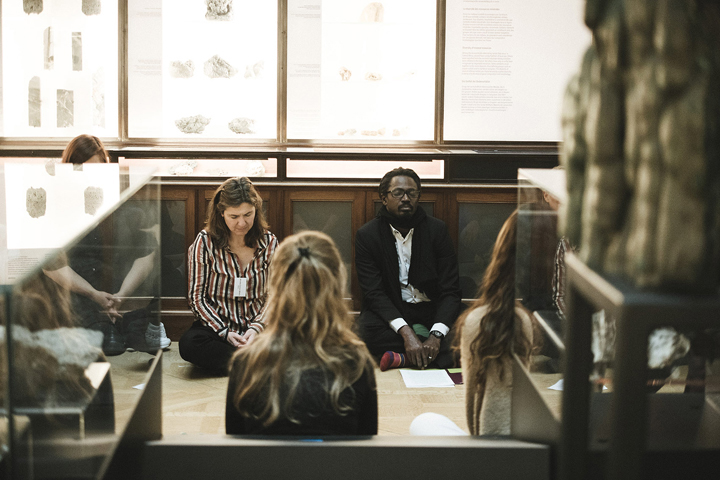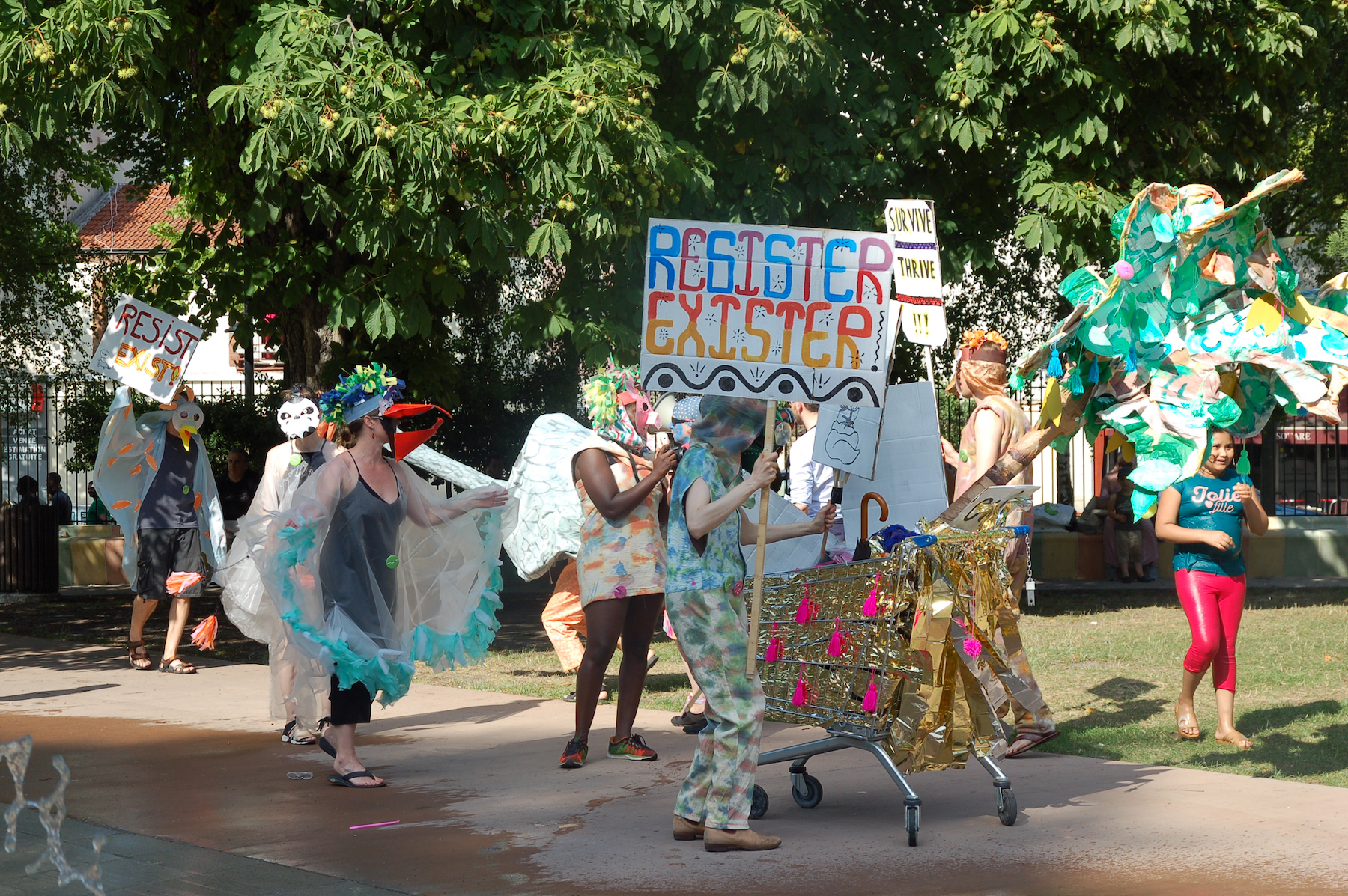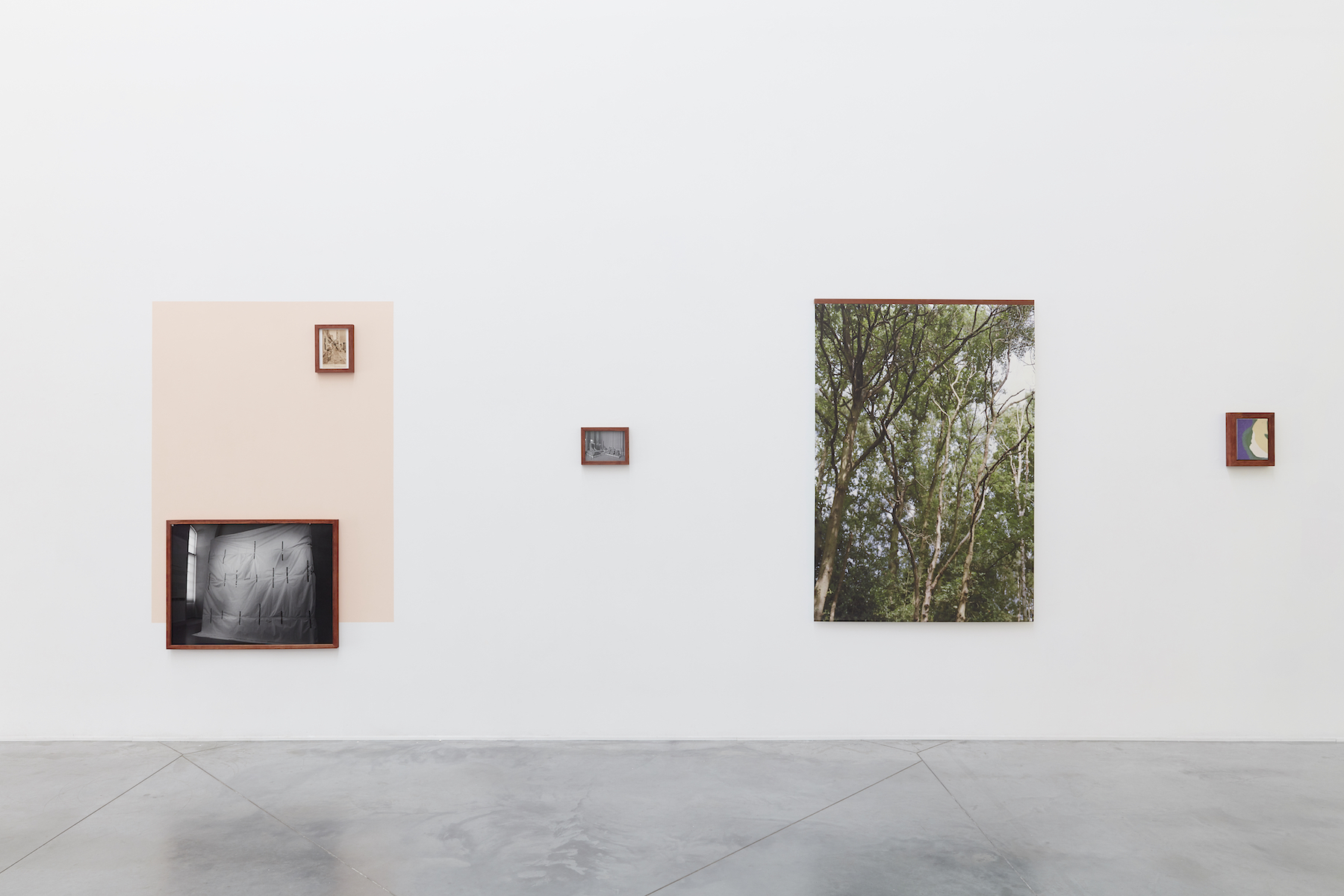
In 2005, Grace Ndiritu wasn’t deemed “British enough” to have her work included in the British Art Show, the major touring exhibition organised every five years by the Southbank Centre’s Hayward Gallery as a survey of contemporary British art. Fifteen years on, Ndiritu’s work is included in its ninth edition, titled Home, alongside artists such as Oscar Murillo, Tai Shani, Helen Cammock, Victoria Sin and Heather Phillipson.
Meanwhile, the Southbank Centre finds itself at the centre of controversy over staff redundancies and institutional racism, with 400 people losing their jobs, disproportionately affecting BAME staff who are already underrepresented at the institution. “The real issue is not even the wages and cutting jobs,” Ndiritu tells me during a WhatsApp call, “it’s their idea of making 90 percent of their buildings private rental, leaving only 10 percent for the art. That’s disgusting to me; it shows how neoliberal thought is undermining art. How can we think that’s ok?”

Ndiritu has been calling for the “birth of a new museum” for the best part of two decades. By critiquing western institutions, their structures and objects, she also questions the kind of interactions that are possible in spaces that demand passivity and quiet. Her radical approach integrates art and spiritual practice; in material terms, this includes performance, textiles, workshops, writing, video art, and film. At the heart of it are shamanic performances, that sometimes take place as closed workshops, to help people of all backgrounds and professions transcend the confines of their perceived reality. Ndiritu uses drums, rather than plant medicine, to induce a trance-like state.
Using these methods, she has run meditation courses for migrants and refugees and creative visualisation workshops for staff members of the EU parliament, U.N. and N.A.T.O. She has had museum directors participate in shamanic rituals that often result in visions—and visible change. As part of her Healing the Museum project that began in 2012, she worked with climate change refugees and policymakers in Belgium; the outcome of their shamanic journey was a paper and a think tank initiated by a staff member of the EU Parliament, that then led to change in the law to give climate change refugees a status in the country. “It was so exciting to see how that non-rational way of thinking can influence something functional like policy. It’s such a powerful way of connecting people regardless of their positions in the outside world.”
- Dreaming the Museum Back to Life: The Inner Life of Objects (2017) Fundació Antoni Tàpies, Barcelona
“It was so exciting to see how that non-rational way of thinking can influence something functional like policy”
“The guiding principle of my shamanic performances being to enliven the Museum once again back into action, so that the Museum can re-take its proper place: as a cultural space in which new advancements in art, audience participation and art education can affect wider society and life for the good of all beings,” Ndiritu writes in her 2017 essay, Ways of Seeing: A New Museum Story for Planet Earth—a kind of manifesto for the new museum.
Ndiritu examines Western culture and the unified field theory; the idea that we are part of one mass. Ndiritu herself has experienced this transcendental state through meditation—the point of her practice has been to bring “new energy” into the museum, to animate it again. “My thing is that in the Western world everything is dead, it’s dead material—yet most of the world believes in animism or something bigger.”

Ndiritu has been thinking about the bigger picture from a young age; she grew up between rural Kenya and working-class Birmingham, with a “very political” nurse as a mother. She studied textile art at Winchester, but it was a trip to India to hear the Dalai Lama talk that made more of an impact on her path than anything else; he spoke of “socially benefitting activities”. This got her rethinking the way an artist could function in the world: “Before that, I’d felt like I was living a double life, that my art practice and my spiritual practice had to be separate. I was doing yoga and meditation and people would laugh at me. But that made me reflect on how powerful art is as a medium for bringing people together.”
At the end of the 1990s, Ndiritu went to study for a postgrad at De Ateliers, Amsterdam, where Steve McQueen was among her teachers. From him, she learned “self-belief—not as a lesson, just him being an example of what you could do, especially as a Black artist.” Ndiritu’s own short film, Black Beauty, shot at the end of the first wave of the pandemic in Spain, is due to be released at festivals and will be shown at Nottingham Contemporary and Coventry Biennale next year.

When Ndiritu returned to England with her ideas, however, “no-one understood what I was talking about. In England, it’s a nihilistic culture and there was also this consensus that if you were African you had to make work about postcolonial identity and politics, and while that is important to talk about, and I have talked about it in my work, I wasn’t only interested in that. I wanted to make work about integrating spiritual practice with art, and the art world wasn’t interested. My art and spiritual practice have the exact same trajectory, it’s my life.” In an atheist art world based around a capitalist market economy, there was little understanding of genuine, earnest social practice like Ndiritu’s.
So she went abroad—she lived in alternative communities (where she also recalls witnessing racism, sexism and classism) and presented her performances in European museums, from MACBA and the Pompidou, to S.M.A.K and MSK Ghent. In 2017, she even started her own community, The Ark: Center For Interdisciplinary Experimentation, to explore the power dynamics between individuals and groups and question why we perceive power negatively. Everything from the food to the uniforms of the members was inspired by the ancient Indian Vedic chakra system.

“I wanted to make work about integrating spiritual practice with art, and the art world wasn’t interested”
Ndiritu has named 2020 ‘The Year of Black Healing’, in response to the bandwagoning politics of the day, and in practical terms, she will be running a yearlong programme in collaboration with institutions around the world. She has already been in Vancouver, Berlin, Patagonia and Buenos Aires, and New York; the next stop in October is in Turin, at Everything Passes Except the Past, a festival co-organised by Goethe-Institut Brussels and Fondazione Sandretto Re Rebaudengo.
At the Fondazione Sandretto, Ndiritu will present A Quest for Meaning, a work that she began in 2015, exploring the traditional notion of photography as a rational method for categorising, that also embodies a western male approach to documentation. Ndiritu instead uses photography as a non-rational, shamanic practice; pictures become portals, and time is expanded, not frozen. Through the way in which her photographs are installed in the space Ndiritu also comments on Modernism and its prevailing ideology, and the relationship between art and architecture in Europe, colonialism and postcolonialism.
It is challenging work that raises difficult questions, and it asks them in a way that doesn’t fit the mould. Ndiritu’s importance is now beginning to be recognised—though she says she doesn’t feel it is her making the work; it’s something bigger. Ndiritu may have once been ridiculed for her spiritual practice, and for thinking it could be useful in different cultural and social environments, but audiences are finally catching up with her. Still, we have to end our conversation, because she is about to go off-grid again, this time to a retreat in Spain.
All images courtesy of the artist






